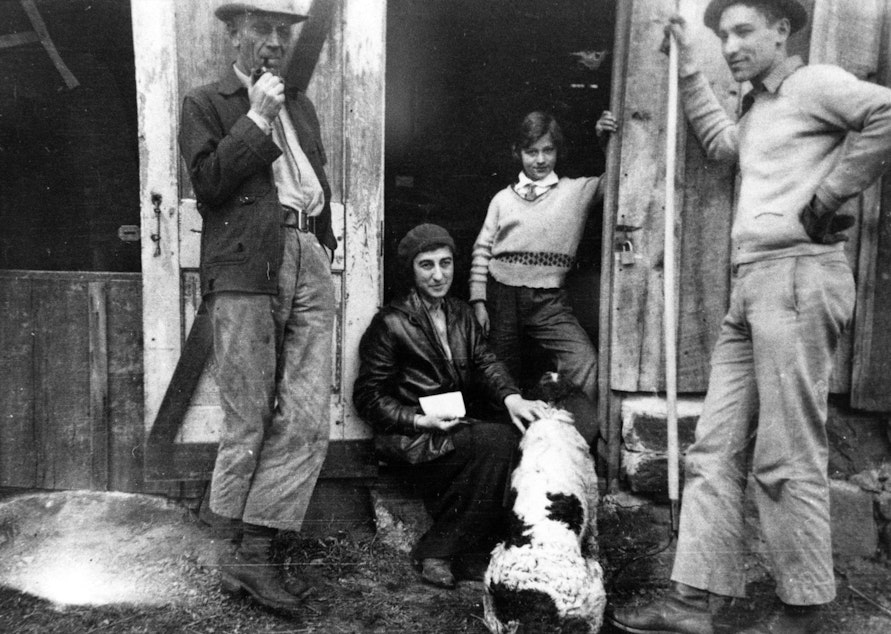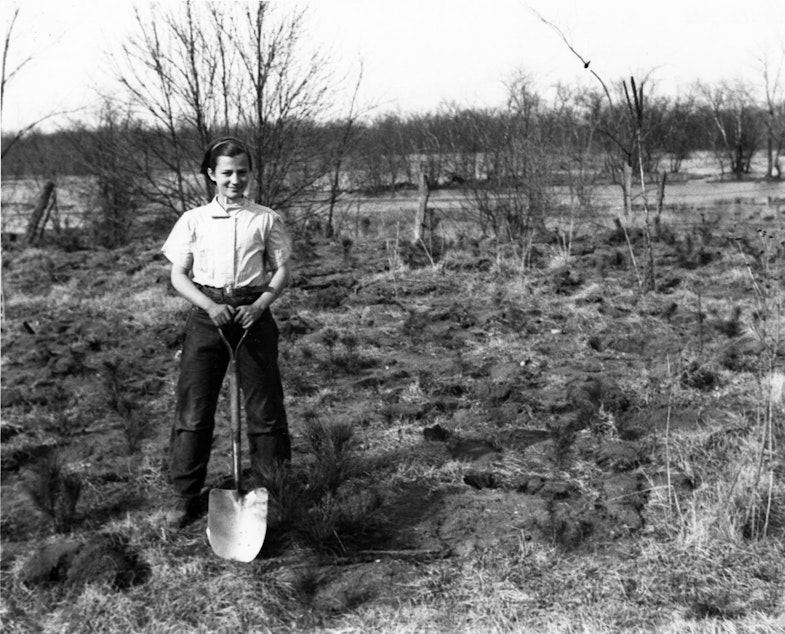Seattle scientist, conservationist Estella Leopold dies at 97

Seattle scientist and conservationist Estella Leopold has died at the age of 97.
Leopold spent most of her career at the University of Washington, teaching and learning about the distant past through pollen deposits.
A paleobotanist by training, she helped document the earthquake hazard that runs beneath central Puget Sound, now known as the Seattle Fault. A study she coauthored of pollen and other fossils from Bainbridge Island showed that a massive earthquake 1,000 years ago had abruptly lifted the island’s southeast tip as much as 23 feet.
Such a quake today would send a tsunami barreling into West Seattle and downtown Seattle with little warning.
After Mount Saint Helens erupted in 1980, Leopold fought a U.S. Forest Service plan to seed the area with exotic grasses. She advocated for the area to become a national monument, which it did in 1982.

She published more than 100 scientific papers over half a century, even after her retirement in 2000, and released her third book in 2023. According to HistoryLink.org, she also wrote anonymous background papers to help advocates fight projects like damming the Grand Canyon.
Leopold had been hoping to put out a revised edition of her latest book — on her mother, also named Estella — when she died, according to longtime University of Washington colleague, biology professor Dee Boersma.
“She was really not ready to go,” Boersma said.
Boersma said Leopold had incredible determination and optimism.
“She always thought things would get better,” Boersma said.
Estella Leopold was the youngest of five children of author and biologist Aldo Leopold, one of the most influential figures in the American conservation movement.
She was eight years old when her father bought a rundown farm and shack along the Wisconsin River, 30 miles north of their home in Madison. The farm was immortalized in his most famous book, "A Sand County Almanac," and the shack was added to the National Register of Historic Landmarks. The Leopolds, parents and children, worked to restore the worn-out land to ecological health.

The Leopold children became scientists, and three of them, including Estella, were eventually elected to the National Academy of Sciences, a feat no other family has claimed.
Estella Leopold earned a Ph.D. in botany from Yale University in 1955 and worked for the United States Geological Survey in Denver for 20 years before moving to Seattle in 1976.
Like her father, Estella spoke often of the need for a “land ethic” to guide humans’ use of a planet we share with countless other species.
Estella Leopold and her siblings started the Aldo Leopold Foundation in 1982 to expand the accepted definition of “community” beyond human beings to include all the other parts of the Earth.
She died Sunday, the last of the Leopold siblings to do so. A private memorial service is being held on Mar. 3 in Seattle.





